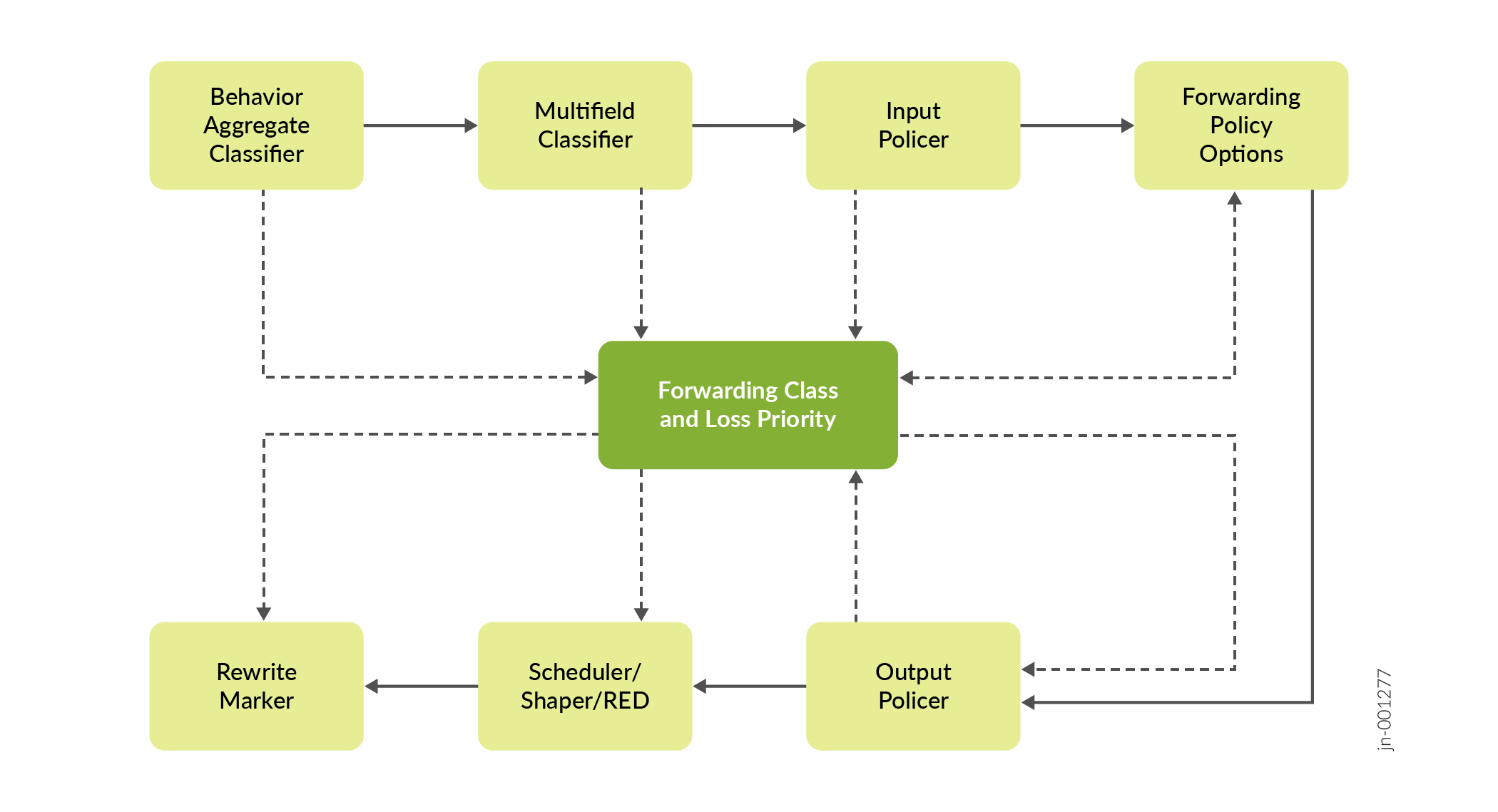CoS Components Packet Flow
On Juniper Networks devices, you configure CoS functions using different components. These components are configured individually or in a combination to define particular CoS services. Figure 1 displays the relationship of different CoS components to each other and illustrates the sequence in which they interact.

Each box in Figure 1 represents a CoS component. The solid lines show the direction of packet flow in a device. The upper row indicates an incoming packet, and the lower row an outgoing packet. The dotted lines show the inputs and outputs of particular CoS components. For example, the forwarding class and loss priority are outputs of behavior aggregate classifiers and multifield classifiers and inputs for rewrite markers and schedulers.
Typically, only a combination of some components shown in Figure 1 (not all) is used to define a CoS service offering. For example, if a packet's class is determined by a behavior aggregate classifier, it is associated with a forwarding class and loss priority and does not need further classification by the multifield classifier.
This section contains the following topics:
CoS Process on Incoming Packets
Classifiers and policers perform the following operations on incoming packets:
A classifier examines an incoming packet and assigns a forwarding class and loss priority to it.
Based on the forwarding class, the packet is assigned to an outbound transmission queue.
Input policers meter traffic to see if traffic flow exceeds its service level. Policers might discard, change the forwarding class and loss priority, or set the PLP bit of a packet. A packet for which the PLP bit is set has an increased probability of being dropped during congestion.
CoS Process on Outgoing Packets
The scheduler map and rewrite rules perform the following operations on outgoing packets:
Scheduler maps are applied to interfaces and associate the outgoing packets with a scheduler and a forwarding class.
The scheduler defines how the packet is treated in the output transmission queue based on the configured transmit rate, buffer size, priority, and drop profile.
The buffer size defines the period for which the packet is stored during congestion.
The scheduling priority and transmit rate determine the order in which the packet is transmitted.
The drop profile defines how aggressively to drop packets that are using a particular scheduler.
Output policers meter traffic and might change the forwarding class and loss priority of a packet if a traffic flow exceeds its service level.
The rewrite rule writes information to the packet (for example, EXP or DSCP bits) according to the forwarding class and loss priority of the packet.
